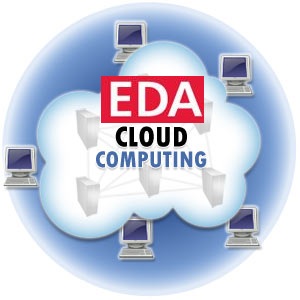 Since around the posting of my prior blog [Chip in the Clouds – “Gathering”] to now many events have taken place. Facebook announced its intent to acquire Instagram for $1B in cash and stock, completed its initial public offering, announced an Instagram competitive product by releasing “Facebook Camera” and has been busy addressing the question of whether it disclosed material information about its near term earnings selectively to certain institutional investors. What do these Facebook related events have anything to do with cloud-based chip design? At the surface it looks like nothing and therein lays a major issue.
Since around the posting of my prior blog [Chip in the Clouds – “Gathering”] to now many events have taken place. Facebook announced its intent to acquire Instagram for $1B in cash and stock, completed its initial public offering, announced an Instagram competitive product by releasing “Facebook Camera” and has been busy addressing the question of whether it disclosed material information about its near term earnings selectively to certain institutional investors. What do these Facebook related events have anything to do with cloud-based chip design? At the surface it looks like nothing and therein lays a major issue.
Facebook or Google, Instagram or Facebook Camera, Google+ or for that matter any internet-based social-media offering cannot work without one important component and that is the semiconductor chip running the computers and server farms that power these social-media platforms and apps. A great majority of the population does not know and/or does not consciously think about this. What would happen if the semiconductor industry goes on strike for a month? This will not happen and neither am I suggesting it but just imagine the impact to the social-media world and the rest of the world if this were to happen. In spite of this key role, semiconductor companies do not receive anywhere close to the relative valuations that social-media companies are receiving. Instagram received a billion dollar valuation after taking in just millions of dollars over a 2-year period to produce an app that allows a user to add effects to photos. Compare that to the billions of dollars that go into the semiconductor industry and the little things that are output (I’m speaking figuratively about the micro sized chips that are produced and literally about the relatively tiny valuations semiconductor companies receive).
As newer complex chips are being designed and produced, the cost to develop these chips has increased multi-fold but the size of the average funding rounds has remained about the same as it was many years ago. Investing in semiconductor companies has become too risky even for VCs. VCs are now able to make smaller investment rounds in social-media companies and see success/failure in a shorter time interval compared to a semiconductor investment.
But that does not mean innovation in semiconductors will come to a halt. Nor does this mean that the semiconductor industry is facing death. But it is true that the industry is going through a serious ailment. Venture capital funding has slowed down to a trickle. In spite of this, as the famous phrase “Life will find a way,” from the movie Jurassic Park, the semiconductor industry will find a way out of this ailment. This is the industry that has been most innovative over its 60-year history in terms of technology as well as its cost-reduction delivery.
Innovative companies have been doing their part to help semiconductor companies deal with the ailment and continue to deliver great new products that benefit the world. The value chain producer model helped chip companies avoid a large portion of their fixed cost investment without sacrificing their ability to design and deliver cutting-edge innovative products. Marseille is utilizing a proprietary Virtual silicon design methodology/technology to rapidly prototype products before committing to silicon thus mitigating silicon respin risks and accelerating time to market for its customers. Marseille could help the industry by licensing this technology to other semiconductor companies who it does not compete with.
SiCADas a cloud-based silicon design company will allow its customers the ability to extend the EDA tools and IT budgets at the same time enhancing their ability to bring products to market faster. Customers don’t like feeling captive to any supplier. With the recent consolidations in the EDA world, the time is ripe for customers to demand a heterogeneous cloud-based silicon design platform. Chip in the clouds precipitation has begun. Expect the downpour to continue. Hear directly from customers and suppliers by attending the DAC 2012 panel “Is EDA in the Cloud Just Pie in the Sky?” hosted by Nitin Deo on June 6, 2012 at 1:30pm at the Moscone Convention Center.http://www.linkedin.com/in/kalarrajendiran







Facing the Quantum Nature of EUV Lithography